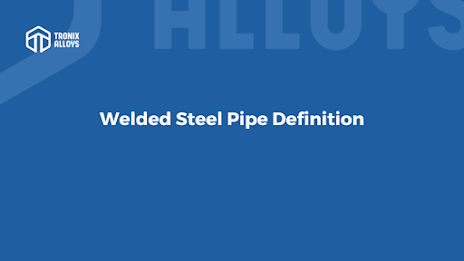316 Stainless Steel Pipe vs 316L Seamless Pipe
What is 316 Stainless Steel Pipe?
It is a steel tube made of
molybdenum, chromium, and nickel alloy with molybdenum added to it. The
material is highly wear-resistant and corrosion-resistant compared to the
ordinary 304 steel material, due to its high wear-and-tear resistance,
strength, and corrosion resistance. A stainless steel tube of the gra 316,
which is high-quality stainless steel, is ideal for applications requiring high
strength and corrosion resistance. Stainless steel 316 is the world’s second
most widely used grade in the world. Because of its resistance to corrosion and
stress cracking caused by chloride ions in chloride ion networks, stainless
steel 316 tubings are employed in a wide range of applications in some of the
most important industries such as food processing, marine industry, seawater
processing, nuclear power plants, heat exchangers, and boilers. Because of
this, this material can survive in environments with a high concentration of
chloride ions.
Benefits of 316 Stainless Steel
Stainless Steel 316 is not only
excellent for its durability, but it also has a number of other advantages,
including the following:
· It retains its strength at elevated temperatures for a longer period of time than Type 304 steel
· In addition, it is weldable to a high degree of precision
· The machinability of this material is excellent
· There is a good level of corrosion resistance with this product
· A high level of resistance to pitting is provided by this material
· Due to its austenitic structure, it is very tough even at cryogenic temperatures,
which is why it is so widely used
· Potable water is not considered to be a concern for the material
· Superior resistance to chloride is one of its most important attributes
· Molybdenum adds corrosion resistance to the metal, which can withstand acetic, sulfuric,
and sulfurous acids as well as other industrial chemicals. Inks, textiles,
photographic chemicals, papers, textiles, rubber, and bleaches are some of the
products made with these types of corrosive process chemicals.
· Stainless Steel 316 has superior resistance to corrosion, cracking, and
pitting. This stainless steel offers a reduced risk of stress corrosion
cracking, improved creep resistance, as well as better resistance to pitting
and crevice corrosion than other stainless steels.
· Thereare several types of stainless steel that are used in the pulp and paper
industry to avoid iron contamination of the product; Type 316 is one type that
is commonly used in the paper industry.
What is a 316L Seamless pipe?
These austenitic stainless steels
are similar to 304 and 304L, except with the addition of molybdenum. 316L
seamless stainless steel tubes are composed of 316 material and have a low
carbon content. In chloride environments, molybdenum improves corrosion
resistance, particularly pitting and crevice corrosion resistance.
For more information visit
https://tronixalloys.com/316-stainless-steel-pipe-vs-316l-seamless-pipe/
#stainlesssteel #pipe #seamless #316vs316L #steelexporter #supplier #tronix #tronixalloy




Comments
Post a Comment